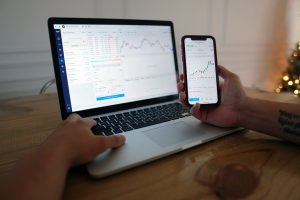Forex trading is an exciting and potentially lucrative venture for anyone looking to make a profit in the financial markets. However, the key to success in forex trading lies in having a well-defined strategy that is both profitable and scalable. In this article, we will explore how scalable a retail forex strategy is and what factors determine its scalability.
What is a retail forex strategy?
A retail forex strategy is a set of rules and guidelines that a trader follows when trading forex. It includes entry and exit points, risk management techniques, and other rules that help the trader make profitable trades. There are many different retail forex strategies available, ranging from technical and fundamental analysis to price action and trend following.
Scalability in forex trading
Scalability in forex trading refers to the ability of a trading strategy to perform consistently well as the trading size increases. In other words, a scalable trading strategy should be able to handle larger trading volumes without experiencing a significant drop in profitability or an increase in risk.
Factors that determine the scalability of a retail forex strategy
The following are some of the key factors that determine the scalability of a retail forex strategy:
1. Liquidity
Liquidity is the ability of a market to absorb a large volume of trades without affecting the price significantly. A highly liquid market is essential for a scalable forex strategy since it allows traders to enter and exit trades quickly and at the desired price.
2. Volatility
Volatility refers to the degree of price movement in a market. A highly volatile market can be both profitable and risky for traders. While volatility can provide ample opportunities for profits, it can also lead to significant losses if not managed properly. A scalable forex strategy should be able to handle both high and low volatility markets.
3. Risk management
Risk management is a critical aspect of any forex trading strategy. A scalable strategy should have a well-defined risk management plan that can handle larger trading volumes without compromising on risk management principles. This includes setting stop-loss and take-profit levels, managing position sizes, and using risk-reducing techniques such as hedging.
4. Timeframe
The timeframe that a trader uses for their strategy can also affect its scalability. Scalping strategies, for example, are designed to take advantage of short-term price movements and may not be suitable for larger trading volumes. A swing trading strategy, on the other hand, may be more scalable since it is designed to capture longer-term trends.
5. Technology
Technology plays a significant role in the scalability of a forex trading strategy. A scalable strategy should be supported by a reliable trading platform that can handle large trading volumes without experiencing downtime or slippage. This includes using a high-speed internet connection, a powerful computer, and a robust trading infrastructure.
Conclusion
In conclusion, the scalability of a retail forex strategy depends on several factors, including liquidity, volatility, risk management, timeframe, and technology. A scalable forex strategy should be able to handle larger trading volumes while maintaining profitability and risk management principles. Traders should ensure that their strategy is well-defined, tested, and supported by a reliable trading platform to achieve success in forex trading.





